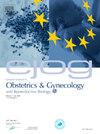腹腔镜和宫腔镜治疗症状性峡部膨出的比较:一项系统综述和荟萃分析
IF 1.7
Q3 OBSTETRICS & GYNECOLOGY
European Journal of Obstetrics and Gynecology and Reproductive Biology: X
Pub Date : 2025-06-04
DOI:10.1016/j.eurox.2025.100405
引用次数: 0
摘要
目的通过系统评价和meta分析比较腹腔镜和宫腔镜治疗症状性峡部膨出的临床效果。方法综合检索PubMed、Scopus、Web of Science,检索截止日期为2024年11月11日。本研究纳入了评估腹腔镜或宫腔镜干预治疗症状性峡部膨出的结果的研究。异质数据采用随机效应模型。该研究已在PROSPERO注册,注册号为CRD420251028603。结果纳入9项研究,共797例患者。宫腔镜检查显示术中出血量明显减少(SMD:−2.28,95 % CI:−3.65至−0.90),住院时间明显缩短(SMD:−2.62,95 % CI:−3.52至−1.72),但手术时间差异无统计学意义。两种方法在症状缓解和缺陷修复方面同样有效(OR: 0.80, 95 % CI: 0.21-2.97)。然而,腹腔镜修复与痛经改善的更好结果相关(OR: 3.46, 95 % CI: 1.42-8.45)和更高的术后妊娠率(OR: 4.17, 95 % CI: 1.89-9.09)。在一些结果中注意到高度异质性,反映了研究设计和人群的可变性。结论腹腔镜和宫腔镜均可有效治疗症状性峡部膨出,各有优势。宫腔镜侵入性小,恢复快,生育能力好。本文章由计算机程序翻译,如有差异,请以英文原文为准。
A comparison between laparoscopy and hysteroscopy approaches in the treatment of symptomatic isthmocele: A systematic review and meta-analysis
Objective
To compare the clinical outcomes of laparoscopy and hysteroscopy in the treatment of symptomatic isthmocele using a systematic review and meta-analysis.
Methods
A comprehensive search of PubMed, Scopus, and Web of Science was performed until November 11, 2024. Studies evaluating outcomes of laparoscopy or hysteroscopy intervention for treating symptomatic isthmocele were included in this study. A random-effects model was employed for heterogeneous data. The study is registered in PROSPERO with registration number CRD420251028603.
Results
Nine studies involving 797 patients were included. Hysteroscopy demonstrated significantly less intraoperative blood loss (SMD: −2.28, 95 % CI: −3.65 to −0.90) and shorter hospital stays (SMD: −2.62, 95 % CI: −3.52 to −1.72), but the operative time difference was non-significant. Both approaches were equally effective in symptom resolution and defect repair (OR: 0.80, 95 % CI: 0.21–2.97). However, laparoscopic repair was associated with better outcomes for dysmenorrhea improvement (OR: 3.46, 95 % CI: 1.42–8.45) and higher postoperative pregnancy rates (OR: 4.17, 95 % CI: 1.89–9.09). High heterogeneity was noted in some outcomes, reflecting variability in study designs and populations.
Conclusions
Both laparoscopy and hysteroscopy are effective in treating symptomatic isthmocele, with each approach offering distinct advantages. Hysteroscopy is less invasive with faster recovery and better fertility.
求助全文
通过发布文献求助,成功后即可免费获取论文全文。
去求助
来源期刊

European Journal of Obstetrics and Gynecology and Reproductive Biology: X
Medicine-Obstetrics and Gynecology
CiteScore
2.20
自引率
0.00%
发文量
31
审稿时长
58 days
 求助内容:
求助内容: 应助结果提醒方式:
应助结果提醒方式:


